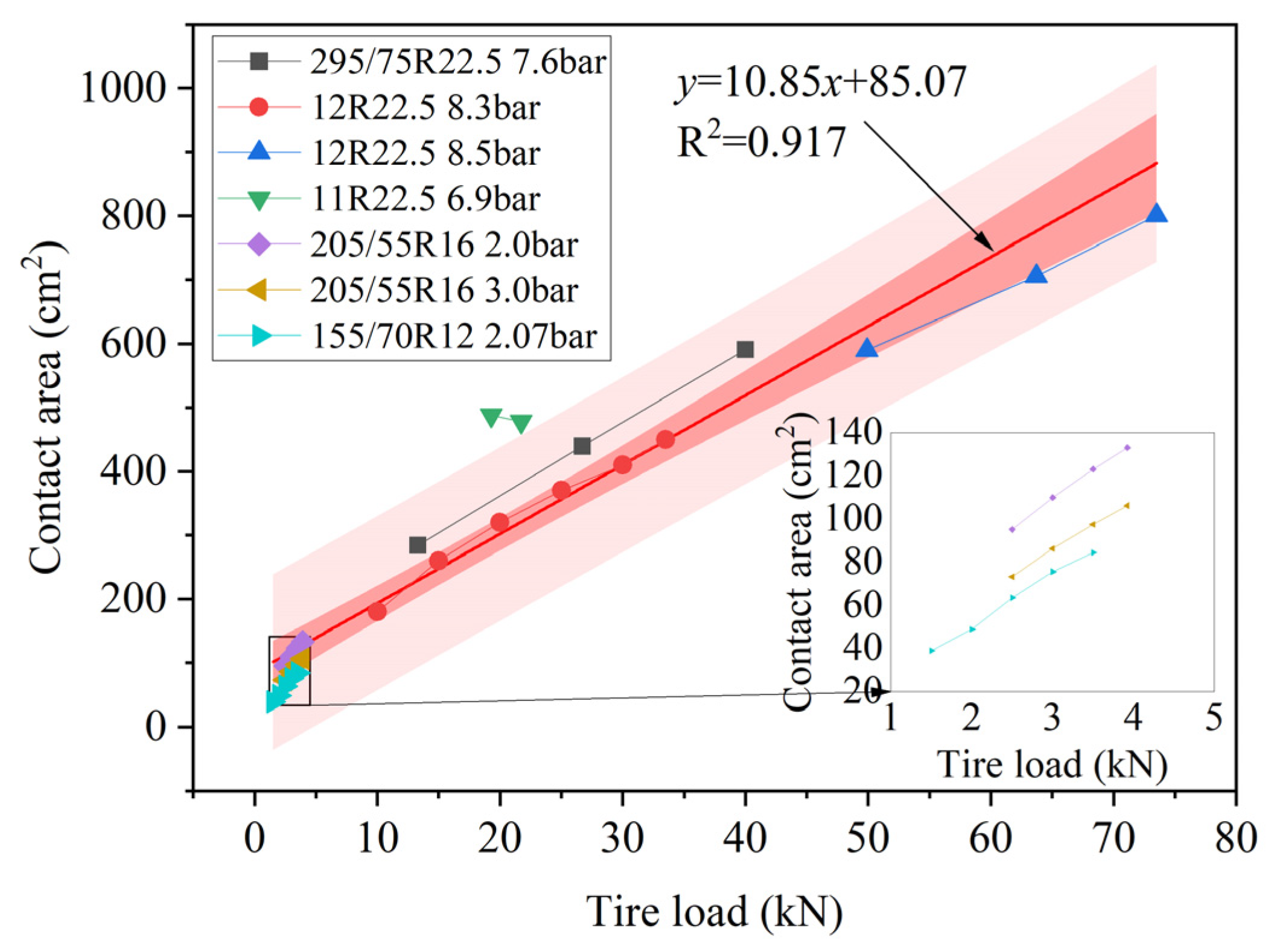Review of Research on Tire–Pavement Contact Behavior
Abstract
1. Introduction
2. Tire–Pavement Contact Characteristics
2.1. Geometric Characteristics
2.2. Mechanical Characteristics
3. Factors Influencing Contact Characteristics
3.1. Tire
3.2. Pavement
3.2.1. Pavement Type
3.2.2. Texture
3.3. Environment
3.3.1. Climatic
3.3.2. Contaminants
4. Experimental Research
4.1. Measurement Methods
4.2. Current Status and Trends in Measurement Methods
5. Theoretical Research
5.1. Mathematical Analysis of Tire–Pavement Contact Behavior
5.2. Numerical Simulation Analysis of Tire–Pavement Contact Behavior
5.3. Current Status and Trends of Theoretical Research
6. Analysis Based on Tire–Pavement Contact Behavior
6.1. Skid Resistance
6.2. Noise
6.3. Pavement Damage
6.4. Rolling Resistance
7. Concluding Remarks
- (1)
- Defining tire–pavement contact characteristics. Tire–pavement contact characteristics are mainly geometric and mechanical. There is a lack of definitions for specific contact characteristics in the pavement field, and the influences of different characteristics on pavement performance are poorly understood and require further research.
- (2)
- Many factors influence tire–pavement contact characteristics. Tire–pavement contact behavior in complex environments is inherently more complex, especially when rain, dust, and pollutants are present. This means that the comprehensive analysis of geometric characteristics, mechanical characteristics, and environmental factors remains limited and will be the focus of future research.
- (3)
- The existing geometric characteristic test lacks the contact depth test and is limited to imprint measurement, and the mechanical feature test is only a vertical stress test, excluding transverse and longitudinal stresses. Tire–pavement contact tests are mostly static and non-standardized, and it is a future trend to develop high-precision, low-cost, and standardized instruments that can comprehensively measure dynamic contact stresses.
- (4)
- In terms of theoretical research, finite element numerical simulation has more development potential than traditional tire–pavement contact calculation model research. Tire–pavement models need to be more realistic and coupled with multiple environmental factors. Model calculations will always differ from reality, and the more realistic the tire path model, the more complex the calculations.
- (5)
- The performance of most pavement changes over time, and this change process is directly related to tire–pavement contact behavior while also being influenced by the pavement environment. Therefore, pavement performance evaluation indexes need to be established in the future based on tire–pavement contact characteristics.
Author Contributions
Funding
Data Availability Statement
Conflicts of Interest
References
- Chen, B.; Zhang, X.; Yu, J.; Wang, Y. Impact of contact stress distribution on skid resistance of asphalt pavements. Constr. Build. Mater. 2017, 133, 330–339. [Google Scholar] [CrossRef]
- Yu, M.; Xu, X.; Wu, C.; Li, S.; Li, M.; Chen, H. Research on the prediction model of the friction coefficient of asphalt pavement based on tire-pavement coupling. Adv. Mater. Sci. Eng. 2021, 2021, 6650525. [Google Scholar] [CrossRef]
- Zheng, B.; Chen, J.; Zhao, R.; Tang, J.; Tian, R.; Zhu, S.; Huang, X. Analysis of contact behaviour on patterned tire-asphalt pavement with 3-D FEM contact model. Int. J. Pavement Eng. 2022, 23, 171–186. [Google Scholar] [CrossRef]
- Yu, M.; You, Z.; Wu, G.; Kong, L.; Liu, C.; Gao, J. Measurement and modeling of skid resistance of asphalt pavement: A review. Constr. Build. Mater. 2020, 260, 119878. [Google Scholar] [CrossRef]
- Yun, D.; Hu, L.; Tang, C. Tire–road contact area on asphalt concrete pavement and its relationship with the skid resistance. Materials 2020, 13, 615. [Google Scholar] [CrossRef] [PubMed]
- Li, T.; Burdisso, R.; Sandu, C. Literature review of models on tire-pavement interaction noise. J. Sound Vibr. 2018, 420, 357–445. [Google Scholar] [CrossRef]
- Kawakami, A.; Ishigaki, T.; Shirai, Y.; Terada, M.; Kubo, K. Evaluation method of pavement surface characteristics for rolling resistance. Road Mater. Pavement Des. 2017, 18 (Suppl. 2), 2–11. [Google Scholar] [CrossRef]
- Maia, M.M.A.S.; Dinis-Almeida, M.; Martinho, F.C.G. The influence of the affinity between aggregate and bitumen on the mechanical performance properties of asphalt mixtures. Materials 2021, 14, 6452. [Google Scholar] [CrossRef] [PubMed]
- Yu, L.; Hu, J.; Li, R.; Yang, Q.; Guo, F.; Pei, J. Tire-pavement contact pressure distribution analysis based on ABAQUS simulation. Arab. J. Sci. Eng. 2022, 47, 4119–4132. [Google Scholar] [CrossRef]
- Belghith, S.; Mezlini, S.; BelhadjSalah, H.; Ligier, J. Modeling of contact between rough surfaces using homogenisation technique. Comptes Rendus Mécanique 2010, 338, 48–61. [Google Scholar] [CrossRef]
- Ren, W.; Han, S.; Fwa, T.F.; Zhang, J.; He, Z. A new laboratory test method for tire-pavement noise. Measurement 2019, 145, 137–143. [Google Scholar] [CrossRef]
- Hernandez, J.A.; Al-Qadi, I.L. Tire–pavement interaction modelling: Hyperelastic tire and elastic pavement. Road Mater. Pavement Des. 2016, 18, 1067–1083. [Google Scholar] [CrossRef]
- Oubahdou, Y.; Wallace, E.; Reynaud, P.; Picoux, B.; Dopeux, J.; Petit, C.; Nélias, D. Effect of the tire—Pavement contact at the surface layer when the tire is tilted in bend. Constr. Build. Mater. 2021, 305, 124765. [Google Scholar] [CrossRef]
- Ma, B.; Xu, H. Vehicle unsteady dynamics characteristics based on tire and road features. Adv. Mech. Eng. 2013, 5, 153257. [Google Scholar] [CrossRef]
- Guo, M.; Li, X.; Ran, M.; Zhou, X.; Yan, Y. Analysis of contact stresses and rolling resistance of truck-bus tyres under different working conditions. Sustainability 2020, 12, 10603. [Google Scholar] [CrossRef]
- Rasol, M.; Schmidt, F.; Ientile, S.; Adelaide, L.; Nedjar, B.; Kane, M.; Chevalier, C. Progress and monitoring opportunities of skid resistance in road transport: A critical review and road sensors. Remote Sens. 2021, 13, 3729. [Google Scholar] [CrossRef]
- Vázquez, V.; Terán, F.; Huertas, P.; Paje, S. Surface aging effect on tire/pavement noise medium-term evolution in a medium-size city. Coatings 2018, 8, 206. [Google Scholar] [CrossRef]
- Lorenz, B.; Oh, Y.R.; Nam, S.K.; Jeon, S.H.; Persson, B. Rubber friction on road surfaces: Experiment and theory for low sliding speeds. J. Chem. Phys. 2015, 142, 194701. [Google Scholar] [CrossRef]
- Ueckermann, A.; Wang, D.; Oeser, M.; Steinauer, B. A contribution to non-contact skid resistance measurement. Int. J. Pavement Eng. 2014, 16, 646–659. [Google Scholar] [CrossRef]
- Woodward, D.; Millar, P.; Lantieri, C.; Sangiorgi, C.; Vignali, V. The wear of Stone Mastic Asphalt due to slow speed high stress simulated laboratory trafficking. Constr. Build. Mater. 2016, 110, 270–277. [Google Scholar] [CrossRef]
- Hamlat, S.; Hammoum, F.; Kerzreho, J. Evaluation of the distribution of local pressures and the real contact area between the tyre and the road surface. Int. J. Pavement Eng. 2014, 16, 832–841. [Google Scholar] [CrossRef]
- Wang, W.; Zhao, K.; Li, J.; Luo, R.; Wang, L. Characterization of dynamic response of asphalt pavement in dry and saturated conditions using the full-scale accelerated loading test. Constr. Build. Mater. 2021, 312, 125355. [Google Scholar] [CrossRef]
- Riehm, P.; Unrau, H.; Gauterin, F.; Torbrügge, S.; Wies, B. 3D brush model to predict longitudinal tyre characteristics. Veh. Syst. Dyn. 2019, 57, 17–43. [Google Scholar] [CrossRef]
- Jiang, X.; Zeng, C.; Gao, X.; Liu, Z.; Qiu, Y. 3D FEM analysis of flexible base asphalt pavement structure under non-uniform tyre contact pressure. Int. J. Pavement Eng. 2017, 20, 999–1011. [Google Scholar] [CrossRef]
- Kuraishi, T.; Takizawa, K.; Tezduyar, T.E. Space–time computational analysis of tire aerodynamics with actual geometry, road contact, tire deformation, road roughness and fluid film. Comput. Mech. 2019, 64, 1699–1718. [Google Scholar] [CrossRef]
- Wang, G.; Roque, R. Impact of wide-based tires on the near-surface pavement stress states based on three-dimensional tire-pavement interaction model. Road Mater. Pavement Des. 2011, 12, 639–662. [Google Scholar] [CrossRef]
- Ding, Y. Numerical Simulation of Tire-Pavement Interaction For Noise, Safety, and Rolling Resistance. Doctoral Thesis, Rutgers The State University of New Jersey, School of Graduate Studies, New Brunswick, NJ, USA, 2018. [Google Scholar]
- Liang, C.; Wang, G.; An, D.; Ma, Y. Tread wear and footprint geometrical characters of truck bus radial tires. Chin. J. Mech. Eng. 2013, 26, 506–511. [Google Scholar] [CrossRef]
- Liu, Q.; Shalaby, A. Simulation of pavement response to tire pressure and shape of contact area. Can. J. Civ. Eng. 2013, 40, 236–242. [Google Scholar] [CrossRef]
- Xie, Y.; Yang, Q. Tyre–pavement contact stress distribution considering tyre types. Road Mater. Pavement Des. 2018, 20, 1899–1911. [Google Scholar] [CrossRef]
- GB/T 6326-2014; Tyre Terms and Definitions. General Administration of Quality Supervision, Inspection and Quarantine of the People’s Republic of China, Standardization Administration of the P.R.C: Beijing China, 2014.
- Guo, M.; Zhou, X. Tire-pavement contact stress characteristics and critical slip ratio at multiple working conditions. Adv. Mater. Sci. Eng. 2019, 2019, 5178516. [Google Scholar] [CrossRef]
- Blab, R.; Harvey, J.T. Modeling measured 3D tire contact stresses in a viscoelastic FE pavement model. Int. J. Geomech. 2002, 2, 271–290. [Google Scholar] [CrossRef]
- Prozzi, J.A.; Luo, R. Quantification of the joint effect of wheel load and tire inflation pressure on pavement response. Transp. Res. Rec. 2005, 1919, 134–141. [Google Scholar] [CrossRef]
- Cesbron, J.; Anfosso-Lédée, F.; Yin, H.P.; Duhamel, D.; Le Houédec, D. Influence of Road Texture on Tyre/Road Contact in Static Conditions. Road Mater. Pavement Des. 2011, 9, 689–710. [Google Scholar] [CrossRef][Green Version]
- Muniandy, R.; Moazami, D.; Hamid, H.; Hassim, S. Characterization of effective tire contact area for various tread patterns. Instrum. Sci. Technol. 2013, 42, 15–26. [Google Scholar] [CrossRef]
- Pillai, P.S.; Fielding-Russell, G.S. Empirical equations for tire footprint area. Rubber Chem. Technol. 1986, 59, 155–159. [Google Scholar] [CrossRef]
- Ge, S.; Wang, B. Analysis and Test Verification on Contact Characteristics of Tire. Mach. Des. Manuf. 2014, 7, 233–235+239. [Google Scholar]
- Tielking, J.T.; Roberts, F.L. Tire contact pressure and its effect on pavement strain. J. Transp. Eng. 1987, 113, 56–71. [Google Scholar] [CrossRef]
- Weissman, S.L. Influence of tire-pavement contact stress distribution on development of distress mechanisms in pavements. Transp. Res. Rec. 1999, 1655, 161–167. [Google Scholar] [CrossRef]
- Linhui, Z.; Zhiyuan, L.; Hong, C. Vehicle state and friction force estimation using nonlinear observer strategies. In Proceedings of the 27th Chinese Control Conference, Kunming, China, 1 January 2008. [Google Scholar]
- Hajj, E.Y.; Thushanthan, P.; Sebaaly, P.E.; Siddharthan, R.V. Influence of tire–pavement stress distribution, shape, and braking on performance predictions for asphalt pavement. Transp. Res. Rec. J. Transp. Res. Board 2012, 2306, 73–85. [Google Scholar] [CrossRef]
- Luo, R.; Prozzi, J.A. Effect of measured three-dimensional tire–pavement contact stress on pavement response at asphalt surface. Transp. Res. Rec. J. Transp. Res. Board 2007, 2037, 115–127. [Google Scholar] [CrossRef]
- Yang, S.; Zhang, J.; Lu, Y.; Li, S. Research progress of vehicle-pavement interaction. J. Mech. Eng. 2021, 57, 1–17. [Google Scholar]
- Marshek, K.M.; Chen, H.H.; Connell, R.B.; Hudson, R.W. Experimental determination of pressure distribution of truck tire-pavement contact. Transp. Res. Rec. 1986, 1070, 9–14. [Google Scholar]
- Wang, H.; Al-Qadi, I.L.; Stanciulescu, I. Simulation of tyre–pavement interaction for predicting contact stresses at static and various rolling conditions. Int. J. Pavement Eng. 2012, 13, 310–321. [Google Scholar] [CrossRef]
- Gong, Z.; Miao, Y.; Li, W.; Yu, W.; Wang, L. Analysis of tyre-pavement contact behaviour of heavy truck in full-scale test. Int. J. Pavement Eng. 2023, 24, 2235630. [Google Scholar] [CrossRef]
- Douglas, R.A.; Woodward, W.D.H.; Woodside, A.R. Road contact stresses and forces under tires with low inflation pressure. Can. J. Civ. Eng. 2000, 27, 1248–1258. [Google Scholar] [CrossRef]
- Hugo, F.; Kennedy, T.W. Surface cracking of asphalt mixtures in southern africa. In Proceedings of the Association of Asphalt Paving Technologists, St Paul, MN, USA, 7–11 January 1985. [Google Scholar]
- Chae, S. Nonlinear Finite Element Modeling and Analysis of a Truck Tire. Ph.D. Thesis, Pennsylvania State University, State College, PA, USA, 2006. [Google Scholar]
- Moazami, D.; Muniandy, R. Determination of relative damage of asphalt pavement from reduced tire contact area. Int. J. Pavement Eng. 2016, 19, 553–563. [Google Scholar] [CrossRef]
- Wang, T.; Dong, Z.; Xu, K.; Ullah, S.; Wang, D.; Li, Y. Numerical simulation of mechanical response analysis of asphalt pavement under dynamic loads with non-uniform tire-pavement contact stresses. Constr. Build. Mater. 2022, 361, 129711. [Google Scholar] [CrossRef]
- Machemehl, R.B.; Wang, F.; Prozzi, J.A. Analytical study of effects of truck tire pressure on pavements with measured tire–pavement contact stress data. Transp. Res. Rec. 2005, 1919, 111–120. [Google Scholar] [CrossRef]
- Wang, H.; Al-Qadi, I.L. Combined effect of moving wheel loading and three-dimensional contact stresses on perpetual pavement responses. Transp. Res. Rec. J. Transp. Res. Board 2009, 2095, 53–61. [Google Scholar] [CrossRef]
- Chen, B.; Xiong, C.; Li, W.; He, J.; Zhang, X. Assessing Surface Texture Features of Asphalt Pavement Based on Three-Dimensional Laser Scanning Technology. Buildings 2021, 11, 623. [Google Scholar] [CrossRef]
- PIARC “Report of the committee on surface characteristics. In Proceedings of the XVII World Road Congress, Brussels, Belgium, 13–19 September 1987.
- Wei, S.; Wang, Y.; Cheng, H.; Wang, D. Stress distributions in the textures of prefabricated pavement surface created with the assistance of 3D printing technology. Int. J. Pavement Eng. 2021, 24, 1–17. [Google Scholar] [CrossRef]
- He, H.; Li, R.; Yang, Q.; Pei, J.; Guo, F. Analysis of the tire-pavement contact stress characteristics during vehicle maneuvering. Ksce J. Civ. Eng. 2021, 25, 2451–2463. [Google Scholar] [CrossRef]
- Yu, J.; Zhang, B.; Long, P.; Chen, B.; Guo, F. Optimizing the Texturing Parameters of Concrete Pavement by Balancing Skid-Resistance Performance and Driving Stability. Materials 2021, 14, 6137. [Google Scholar] [CrossRef] [PubMed]
- Al-Qadi, I.L.; Wang, H. Prediction of tire pavement contact stresses and analysis of asphalt pavement responses: A decoupled approach. In Proceedings of the Asphalt Paving Technology-Proceedings Association of Asphalt Technologists, Tampa, FL, USA, 27–30 March 2011. [Google Scholar]
- Santos Maia, R.; Lacerda Costa, S.; Craveiro Cunto, F.J.; Castelo Branco, V.T.F. Relating weather conditions, drivers’ behavior, and tire-pavement friction to the analysis of microscopic simulated vehicular conflicts. J. Transp. Eng. Part B Pavements 2021, 147, 04021037. [Google Scholar] [CrossRef]
- Wang, F.; Xiao, Y.; Cui, P.; Mo, L.; Fang, M. Review on the characterization of aggregate morphology and its influence on asphalt mixture properties. Mater. Rep. 2022, 17, 21030063. [Google Scholar]
- Sengoz, B.; Onsori, A.; Topal, A. Effect of aggregate shape on the surface properties of flexible pavement. Ksce J. Civ. Eng. 2014, 18, 1364–1371. [Google Scholar] [CrossRef]
- Kokkalis, A.G.; Tsohos, G.H.; Panagouli, O.K. Consideration of Fractals Potential in Pavement Skid Resistance Evaluation. J. Transp. Eng. 2002, 128, 591–595. [Google Scholar] [CrossRef]
- Wei, D.; Li, B.; Zhang, Z.; Han, F.; Zhang, X.; Zhang, M.; Li, L.; Wang, Q. Influence of surface texture characteristics on the noise in grooving concrete pavement. Appl. Sci. 2018, 8, 2141. [Google Scholar] [CrossRef]
- Gong, Z.; Zhang, L.; Wu, J.; Xiu, Z.; Wang, L.; Miao, Y. Review of regulation techniques of asphalt pavement high temperature for climate change adaptation. J. Infrastruct. Preserv. Resil. 2022, 3, 9. [Google Scholar] [CrossRef]
- Zheng, B.; Tang, J.; Chen, J.; Zhao, R.; Huang, X. Investigation of adhesion properties of tire—Asphalt pavement interface considering hydrodynamic lubrication action of water film on road surface. Materials 2022, 15, 4173. [Google Scholar] [CrossRef]
- Gerthoffert, J.; Cerezo, V.; Bouteldja, M.; Do, M. Modeling aircraft braking performance on wet and snow/ice-contaminated runways. Proc. Inst. Mech. Eng. Part J J. Eng. Tribol. 2015, 229, 1065–1078. [Google Scholar] [CrossRef]
- Wies, B.; Roeger, B.; Mundl, R. Influence of pattern void on hydroplaning and related target conflicts. Tire Sci. Technol. 2009, 37, 187–206. [Google Scholar] [CrossRef]
- Tang, T.; Anupam, K.; Kasbergen, C.; Kogbara, R.; Scarpas, A.; Masad, E. Finite element studies of skid resistance under hot weather condition. Transp. Res. Rec. J. Transp. Res. Board 2018, 2672, 382–394. [Google Scholar] [CrossRef]
- Hernandez, J.A.; Al-Qadi, I.L. Contact phenomenon of free-rolling wide-base tires: Effect of speed and temperature. J. Transp. Eng. 2016, 142, 295. [Google Scholar] [CrossRef]
- Ashtiani, R.S.; Pullen, A.B.; Hammons, M.I. Comparative Study of Water-Blasting Equipment for Airfield Surface Decontamination. J. Mater. Civ. Eng. 2016, 28, 04016053. [Google Scholar] [CrossRef]
- Pérez-Fortes, A.P.; Giudici, H. A recent overview of the effect of road surface properties on road safety, environment, and how to monitor them. Environ. Sci. Pollut. Res. 2022, 29, 65993–66009. [Google Scholar] [CrossRef] [PubMed]
- Lantieri, C.; Ghasemi, N.; Cotignoli, L.; Vignali, V.; Simone, A. The evaluation of the effects of hazardous spills by road accidents on the surface performance of an asphalt-wearing course. Int. J. Pavement Eng. 2022; ahead-of-print. [Google Scholar] [CrossRef]
- Thorpe, A.; Harrison, R.M. Sources and properties of non-exhaust particulate matter from road traffic: A review. Sci. Total Environ. 2008, 400, 270–282. [Google Scholar] [CrossRef]
- Pomoni, M.; Plati, C.; Loizos, A. How can sustainable materials in road construction contribute to vehicles’ braking? Vehicles 2020, 2, 55–74. [Google Scholar] [CrossRef]
- Duong, T.T.T.; Lee, B. Determining contamination level of heavy metals in road dust from busy traffic areas with different characteristics. J. Environ. Manag. 2011, 92, 554–562. [Google Scholar] [CrossRef]
- Ruiz-Llata, M.; Martín-Mateos, P.; López, J.R.; Acedo, P. Remote optical sensor for real-time residual salt monitoring on road surfaces. Sens. Actuators B Chem. 2014, 191, 371–376. [Google Scholar] [CrossRef]
- Yu, Q.; Dai, Y.; Zhang, K. Study on determination of tire contact area pressure distribution under static load. Tire Ind. 1999, 19, 11–15. [Google Scholar]
- Zhang, T.; Wang, M.; Wang, S.; Zhou, X.; Li, Q. A Dynamic Tire and Road Ground Stress Measurement Device and Method. China Patents CN201711320599.7, 2017. [Google Scholar]
- De Beer, M.; Fisher, C. Stress-In-Motion (SIM) system for capturing tri-axial tyre–road interaction in the contact patch. Measurement 2013, 46, 2155–2173. [Google Scholar] [CrossRef]
- Hernandez, J.A.; Gamez, A.; Al-Qadi, I.L.; De Beer, M. Analytical approach for predicting three-dimensional tire–pavement contact load. Transp. Res. Rec. J. Transp. Res. Board 2014, 2456, 75–84. [Google Scholar] [CrossRef]
- Liang, C.; Zhu, D.; Wang, G.; Shan, M. Experimental study on tire-road dynamic contact pressure distribution using FTIR imaging. Int. J. Automot. Technol. 2021, 22, 1305–1317. [Google Scholar] [CrossRef]
- Horne, W.B. Influence of the Tire Tread Pattern and Runway Surface Condition on Breaking Friction and Rolling Resistance of a Modern Aircraft Tire; National Aeronautics and Space Administration: Washington, DC, USA, 1962. [Google Scholar]
- Gentle, C.R. Optical mapping of pressures in tyre contact areas. Opt. Lasers Eng. 1983, 4, 167–176. [Google Scholar] [CrossRef]
- Zhang, X.; Liu, T.; Liu, C.; Chen, Z. Research on skid resistance of asphalt pavement based on three-dimensional laser-scanning technology and pressure-sensitive film. Constr. Build. Mater. 2014, 69, 49–59. [Google Scholar] [CrossRef]
- Ghaednia, H.; Wang, X.; Saha, S.; Xu, Y.; Sharma, A.; Jackson, R.L. A review of elastic–plastic contact mechanics. Appl. Mech. Rev. 2017, 69, 060804. [Google Scholar] [CrossRef]
- Király, T.; Primusz, P.; Tóth, C. Simulation of static tyre–pavement interaction using two FE models of different complexity. Appl. Sci. 2022, 12, 2388. [Google Scholar] [CrossRef]
- Wollny, I.; Kaliske, M. Numerical simulation of pavement structures with inelastic material behaviour under rolling tyres based on an arbitrary Lagrangian Eulerian (ALE) formulation. Road Mater. Pavement Des. 2013, 14, 71–89. [Google Scholar] [CrossRef]
- Johnson, K.L. Contact Mechanics; Cambridge University Press: Cambridge, UK, 1987. [Google Scholar]
- Wu, X. Study on the Contact Mechanics Model of Heavy Tire-Asphalt Pavement; Chang’an University: Xi’An, China, 2018. [Google Scholar]
- Greenwood, J.A.; Williamson, J.P. Contact of nominally flat surfaces. Proc. R. Soc. Lond. Ser. A Math. Phys. Sci. 1966, 295, 300–319. [Google Scholar]
- Majumdar, A.; Bhushan, B. Role of fractal geometry in roughness characterization and contact mechanics of surfaces. J. Tribol. 1990, 2, 205–226. [Google Scholar] [CrossRef]
- Persson, B.N.J. Theory of rubber friction and contact mechanics. J. Chem. Phys. 2001, 115, 3840–3861. [Google Scholar] [CrossRef]
- Lorenz, B.; Persson, B.N.J.; Dieluweit, S.; Tada, T. Rubber friction: Comparison of theory with experiment. Eur. Phys. J. E 2011, 34, 1–11. [Google Scholar] [CrossRef] [PubMed]
- Tolpekina, T.V.; Persson, B.N.J. Adhesion and friction for three tire tread compounds. Lubricants 2019, 7, 20. [Google Scholar] [CrossRef]
- Wang, Y.; Lu, Y.J.; Si, C.D. Tire-pavement coupling dynamic simulation under tire high-speed-rolling condition. Int. J. Simul. Model 2016, 15, 236–248. [Google Scholar] [CrossRef]
- Reynaud, P.; Nasr, S.B.; Allou, F.; Chaise, T.; Nelias, D.; Petit, C. 3D modelling of tyre-pavement contact pressure. Eur. J. Environ. Civ. Eng. 2016, 21, 712–729. [Google Scholar] [CrossRef]
- Bai, T.; Cheng, Z.; Hu, X.; Fuentes, L.; Walubita, L.F. Viscoelastic modelling of an asphalt pavement based on actual tire-pavement contact pressure. Road Mater. Pavement Des. 2021, 22, 2458–2477. [Google Scholar] [CrossRef]
- Peng, Y.; Li, J.Q.; Zhan, Y.; Wang, K.C.P.; Yang, G. Finite element method-based skid resistance simulation using in-situ 3D pavement surface texture and friction data. Materials 2019, 12, 3821. [Google Scholar] [CrossRef]
- Najafi, S.; Flintsch, G.W.; Medina, A. Linking roadway crashes and tire–pavement friction: A case study. Int. J. Pavement Eng. 2015, 18, 119–127. [Google Scholar] [CrossRef]
- Yu, M.; Xiao, B.; You, Z.; Wu, G.; Li, X.; Ding, Y. Dynamic friction coefficient between tire and compacted asphalt mixtures using tire-pavement dynamic friction analyzer. Constr. Build. Mater. 2020, 258, 119492. [Google Scholar] [CrossRef]
- Pomoni, M.; Plati, C. Skid Resistance Performance of Asphalt Mixtures Containing Recycled Pavement Materials under Simulated Weather Conditions. Recycling 2022, 7, 47. [Google Scholar] [CrossRef]
- Fwa, T.F.; Choo, Y.S.; Liu, Y. Effect of Aggregate Spacing on Skid Resistance of Asphalt Pavement. J. Transp. Eng. 2003, 129, 420–426. [Google Scholar] [CrossRef]
- Cesbron, J.; Anfosso-Lédée, F.; Duhamel, D.; Ping Yin, H.; Le Houédec, D. Experimental study of tyre/road contact forces in rolling conditions for noise prediction. J. Sound Vibr. 2009, 320, 125–144. [Google Scholar] [CrossRef]
- Dubois, G.; Cesbron, J.; Yin, H.P.; Anfosso-Lédée, F.; Duhamel, D. Statistical estimation of low frequency tyre/road noise from numerical contact forces. Appl. Acoust. 2013, 74, 1085–1093. [Google Scholar] [CrossRef]
- Huang, Z.; Zhang, X.; Chen, B.; Yu, J.; Chen, F. Impact of tire contact texture on noise reduction characteristics of asphalt pavement. Sci. Technol. Eng. 2018, 18, 123–128. [Google Scholar]
- Manyo, E.Y.; Reynaud, P.; Picoux, B.; Tautou, R.; Nelias, D.; Allou, F.; Petit, C. Towards fast modelling of the tire-pavement contact. Eur. J. Environ. Civ. Eng. 2021, 25, 2396–2412. [Google Scholar] [CrossRef]
- Manyo, E.Y.; Reynaud, P.; Picoux, B.; Tautou, R.; Allou, F.; Petit, C.; Nélias, D. Tire–pavement tractive rolling contact under turning conditions: Towards pavement top-down cracking. Int. J. Pavement Eng. 2022, 23, 841–850. [Google Scholar] [CrossRef]
- Ronald, B. Introducing improved loading assumptions into analytical pavement models based on measured contact stresses of tires. In Proceedings of the International Conference on Accelerated Pavement Testing, Reno, NV, USA, 18–20 October 1999. [Google Scholar]
- Moazami, D.; Muniandy, R. Determination of rutting performance of asphalt pavements considering realistic tire-pavement contact area. Int. J. Pavement Res. Technol. 2021, 14, 764–770. [Google Scholar] [CrossRef]
- Liang, C.; Wang, G.; Yu, K.; Mei, Y. Evaluation method of tire rolling resistance and ground-grip performance based on ground contact characteristics. Automot. Eng. 2020, 42, 1679–1687. [Google Scholar]
- Wang, D.; Wang, G.; Li, Z.; Shao, S.; Sun, Y. Evaluation of anti-sliding durability of asphalt mixture based on pressure film technology. China J. Highw. Transp. 2017, 30, 1–9. [Google Scholar]
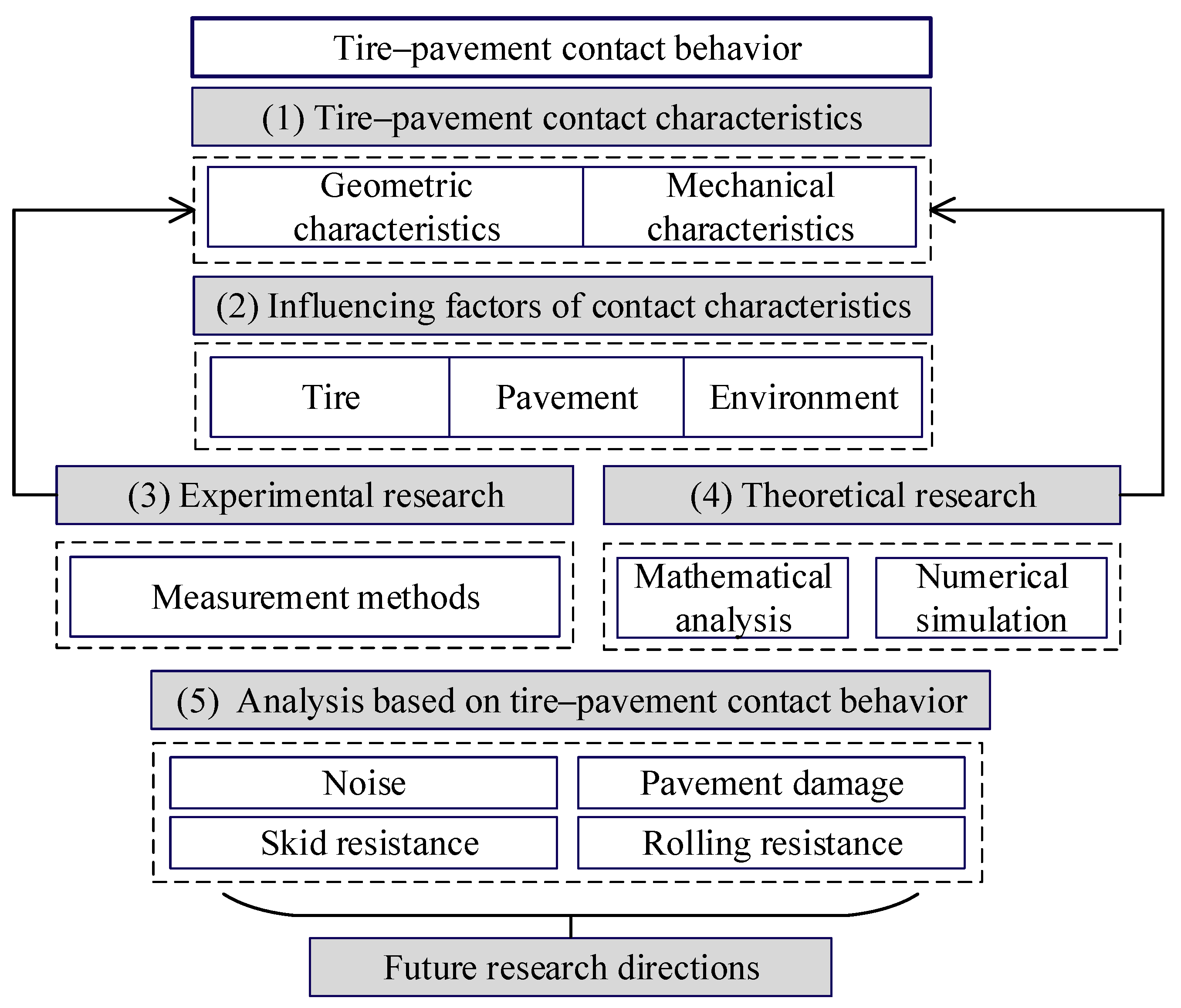
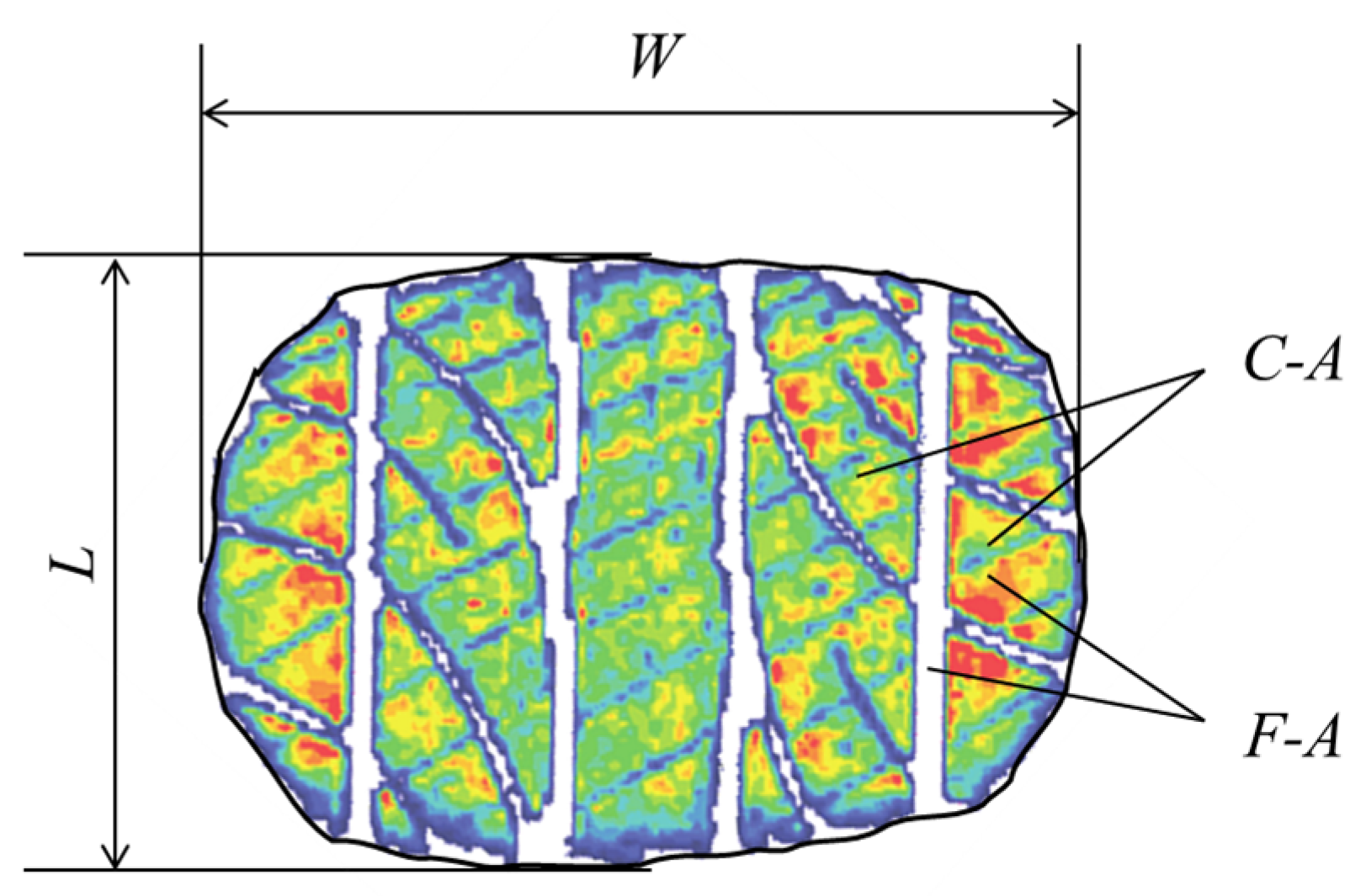

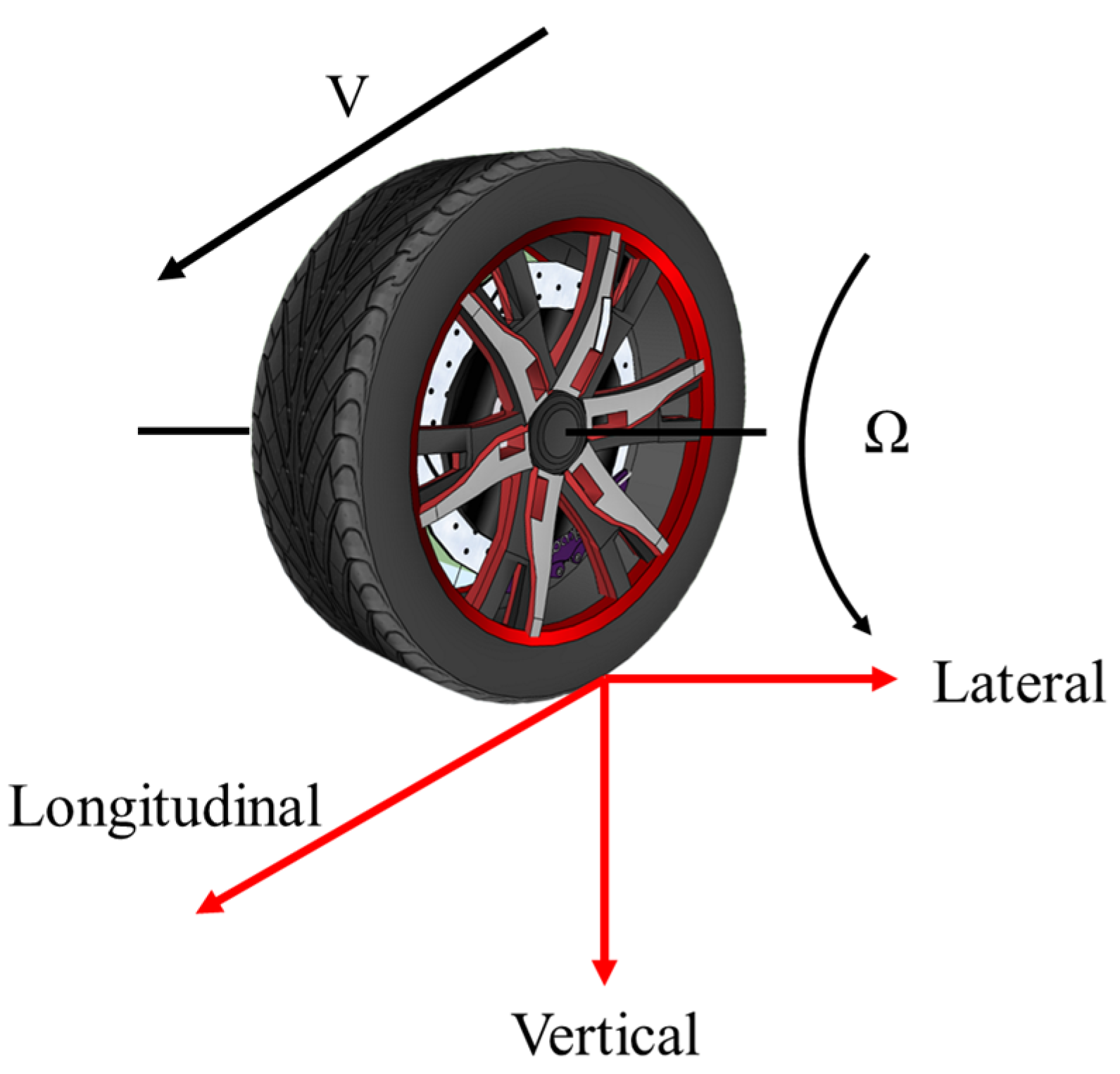

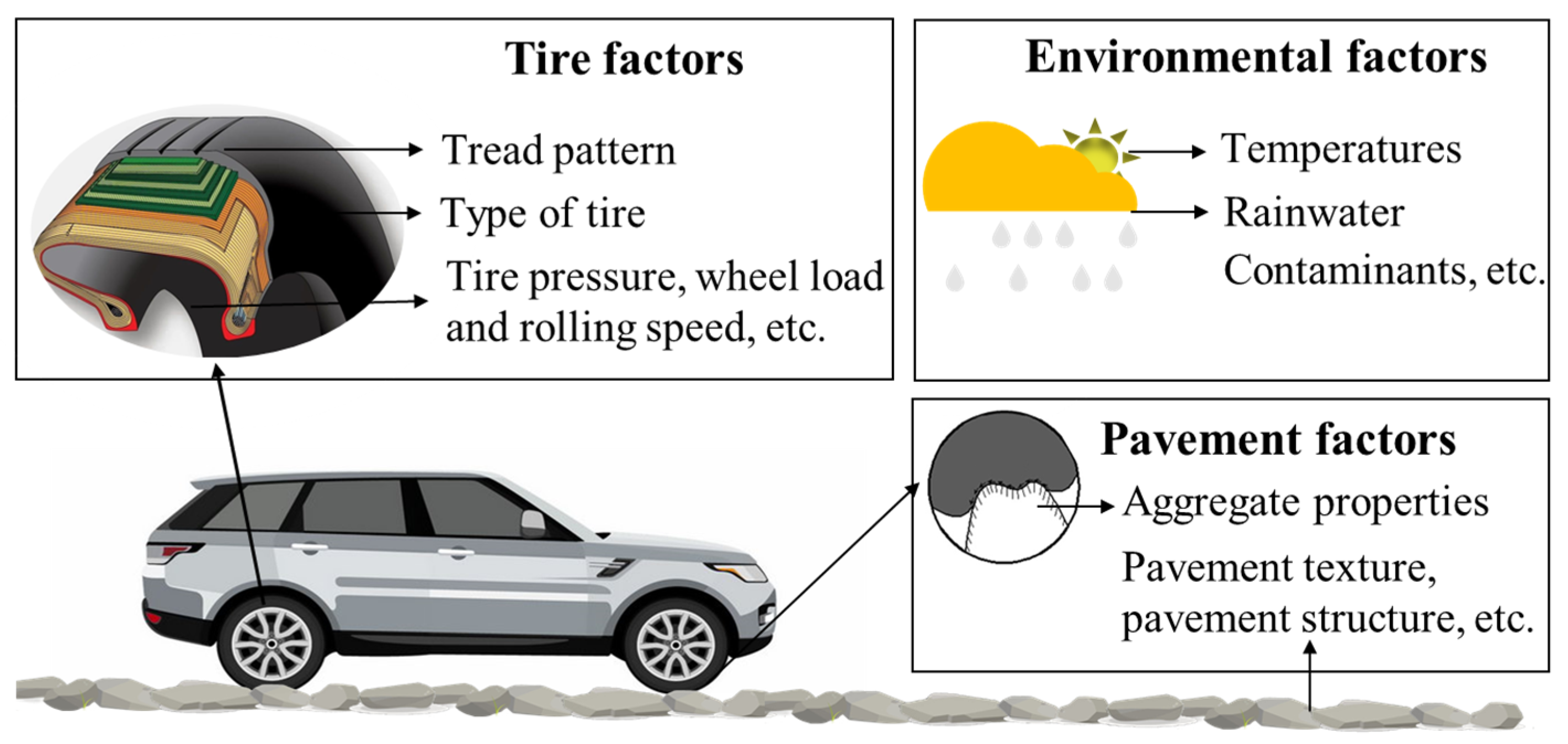
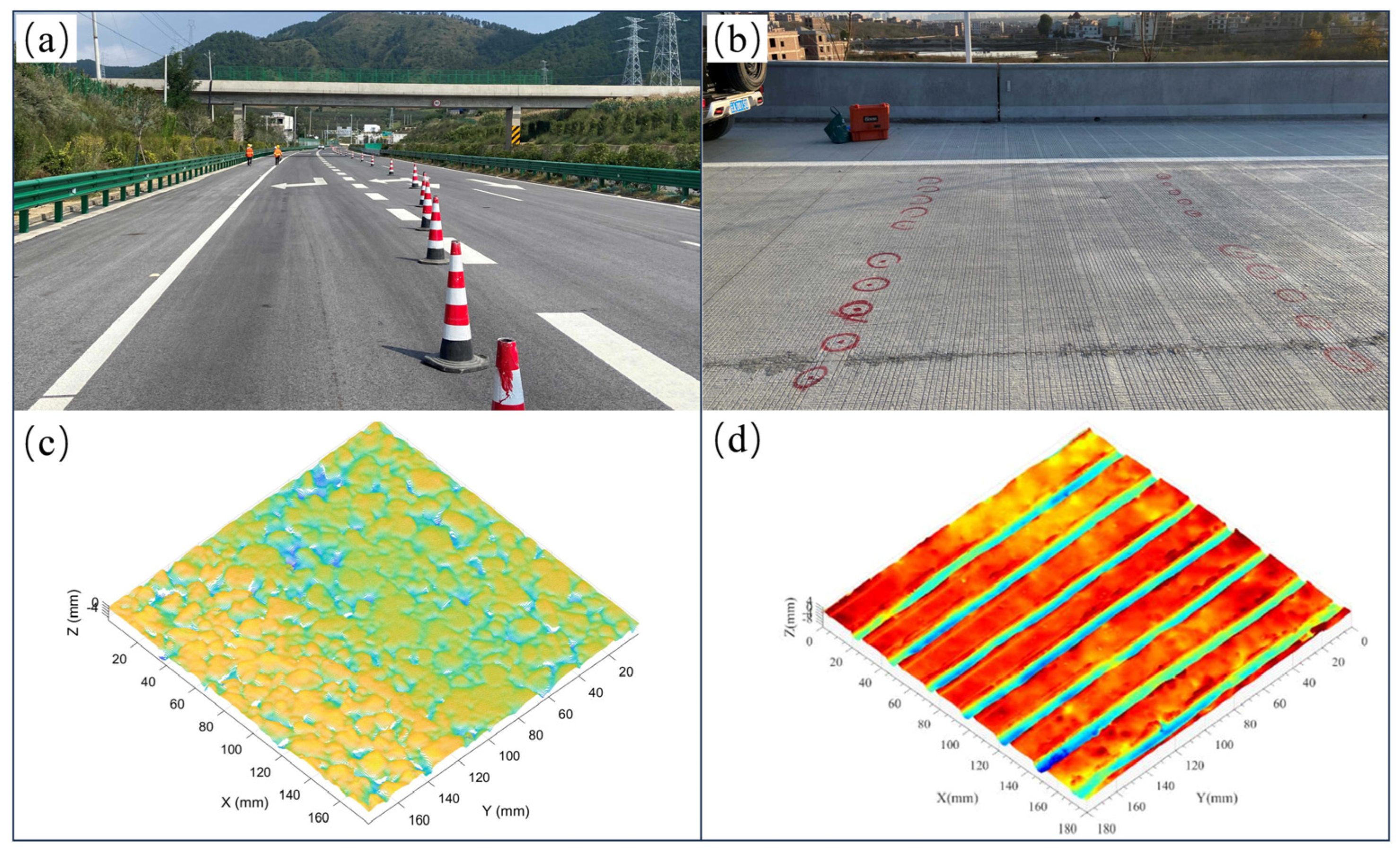
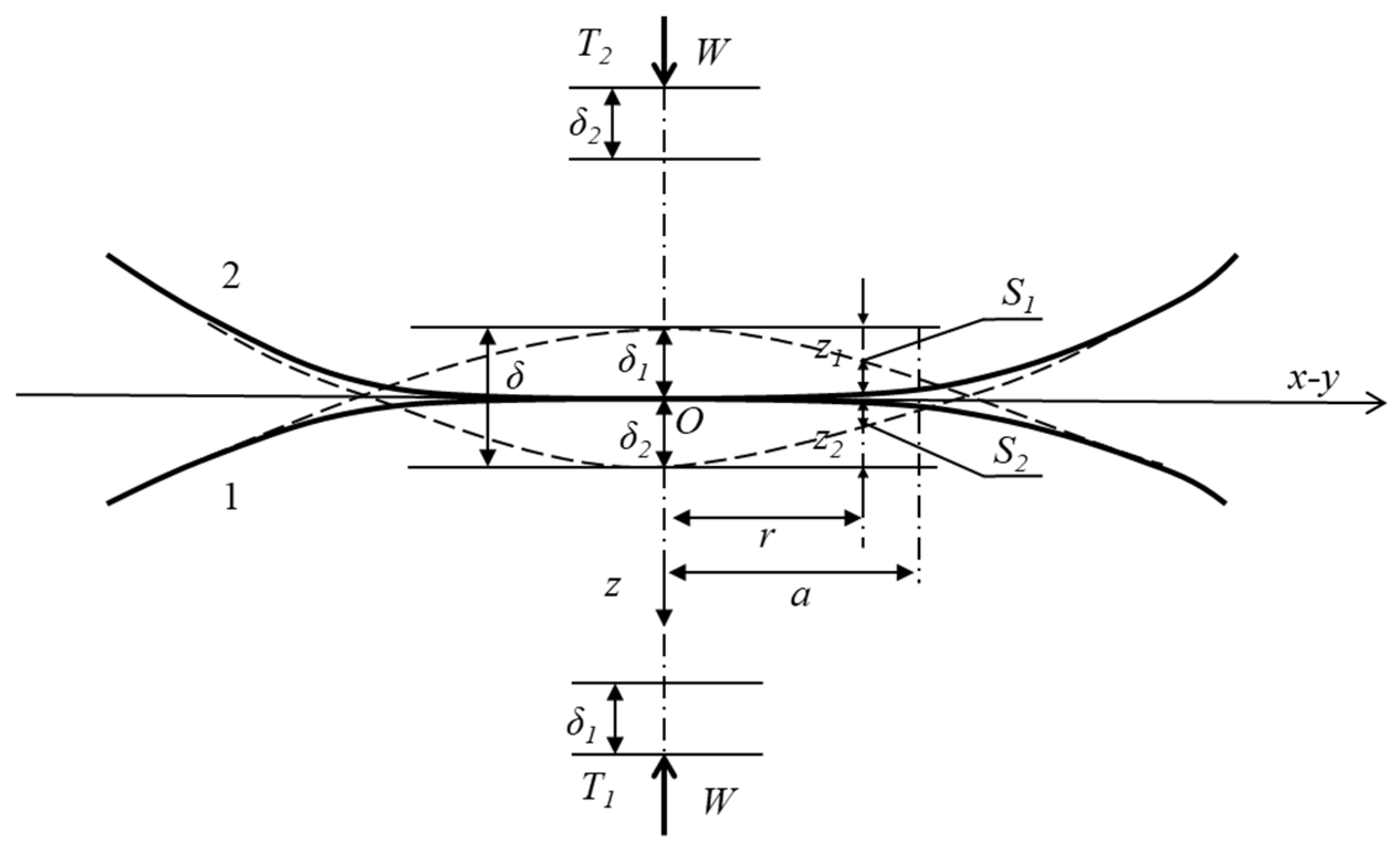
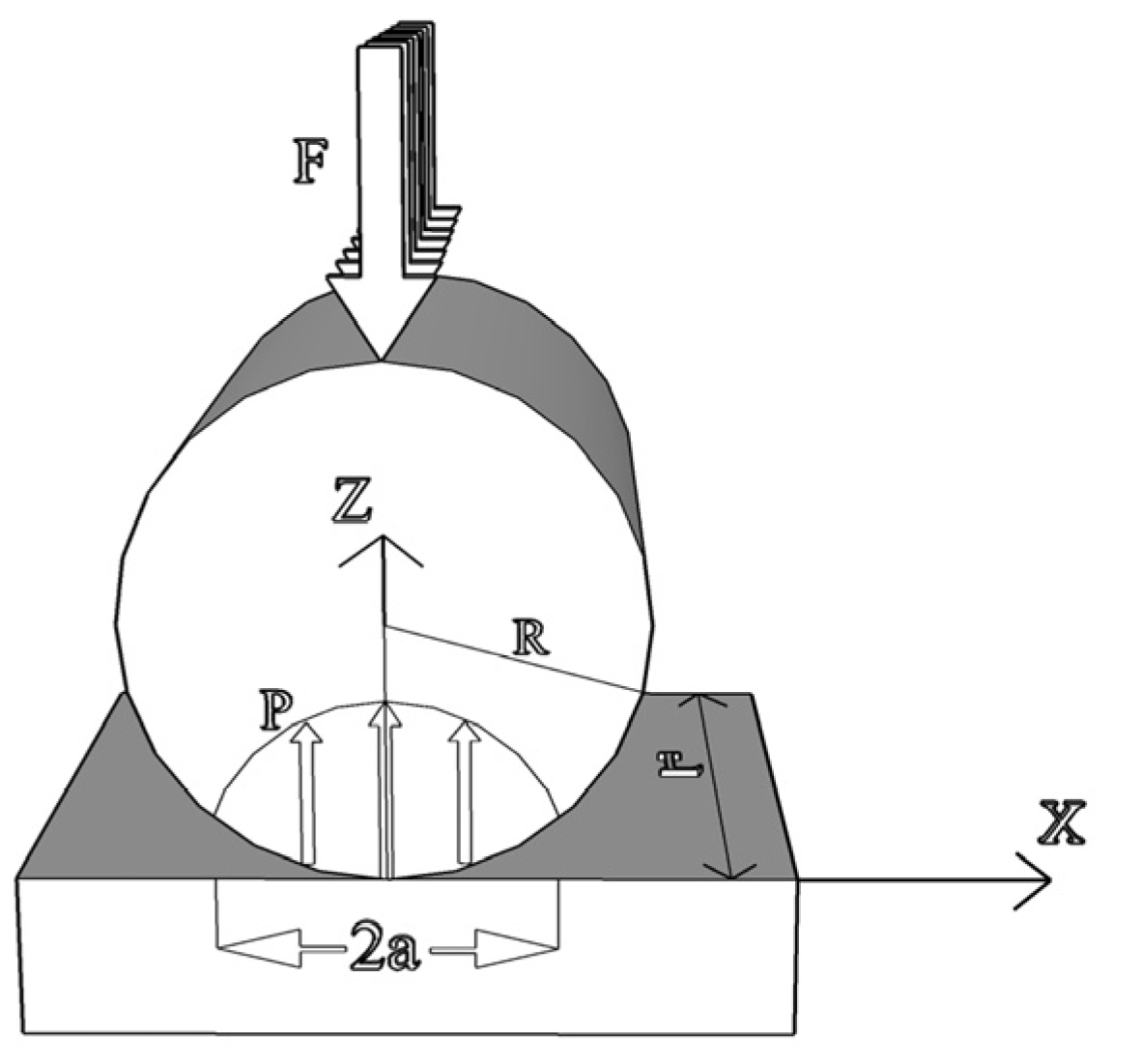
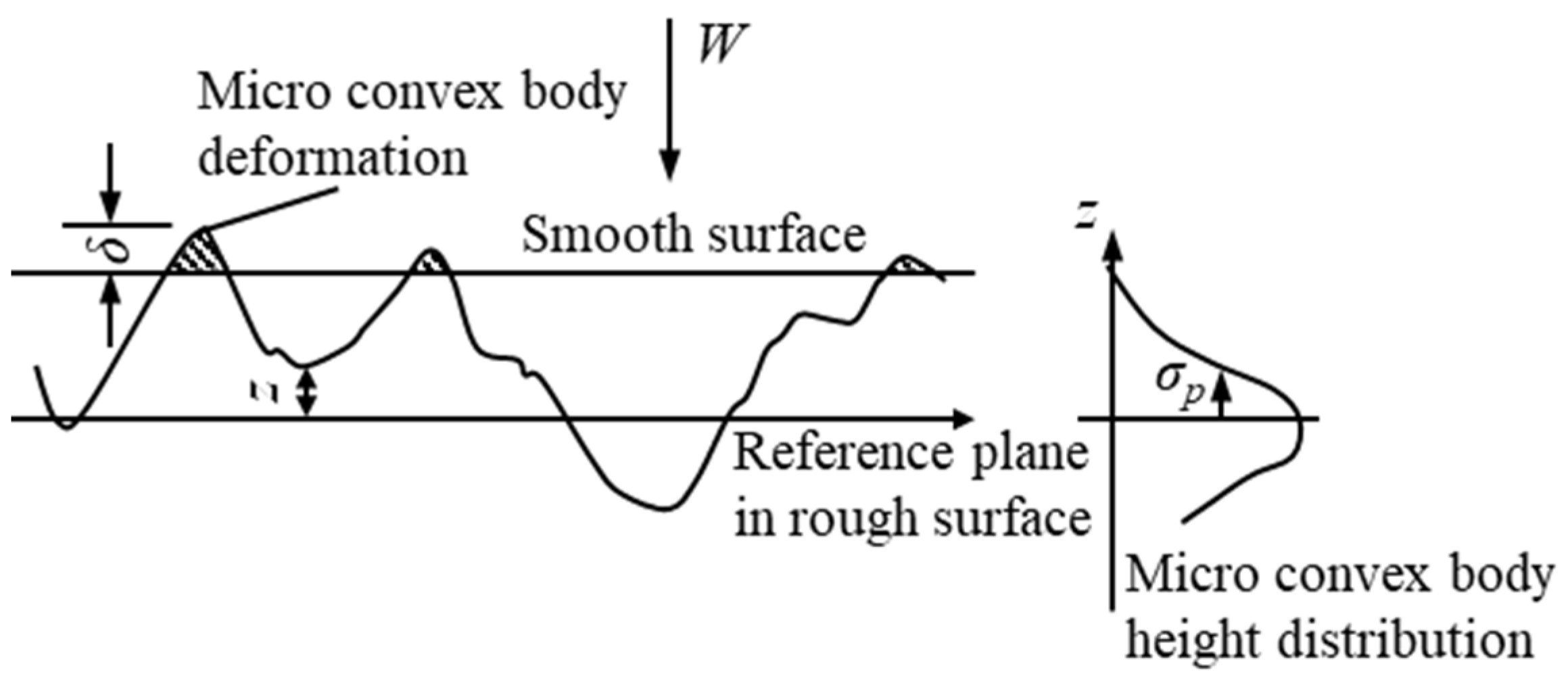


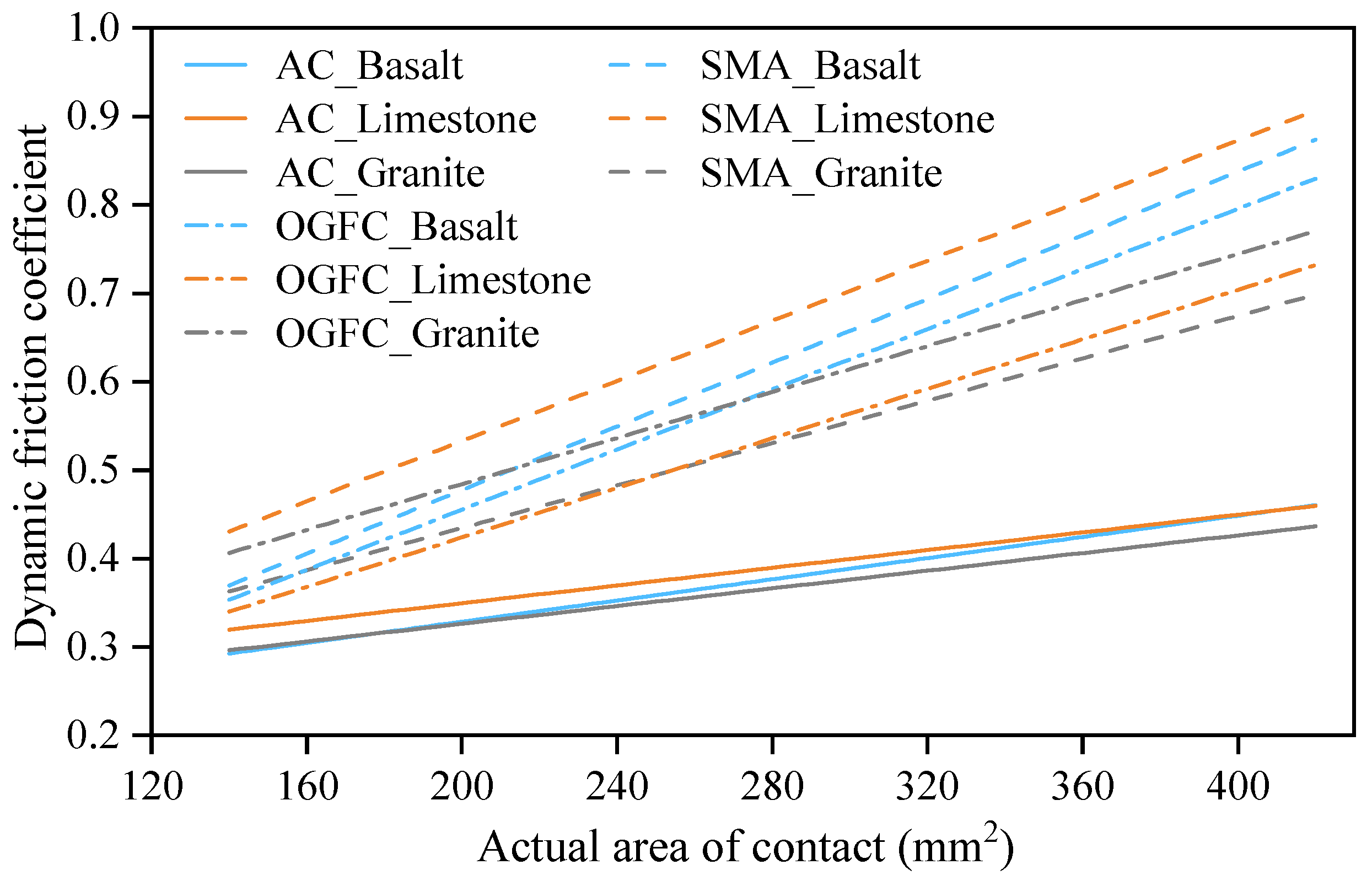
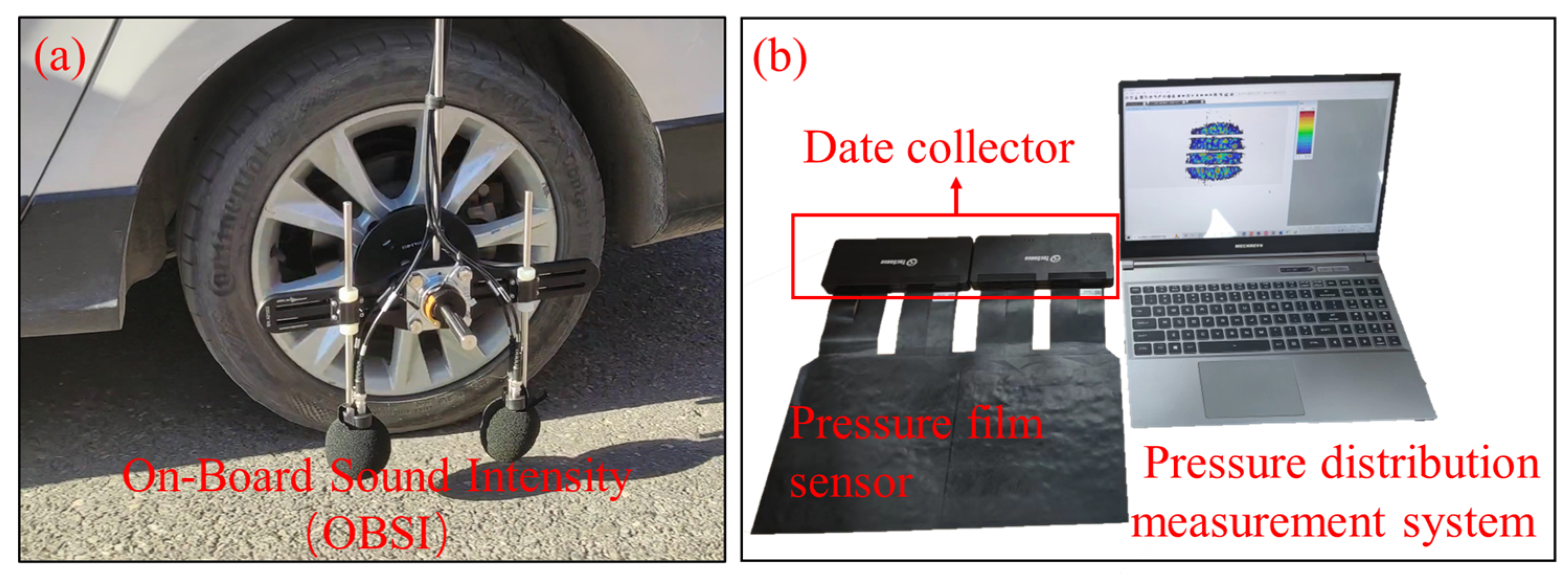
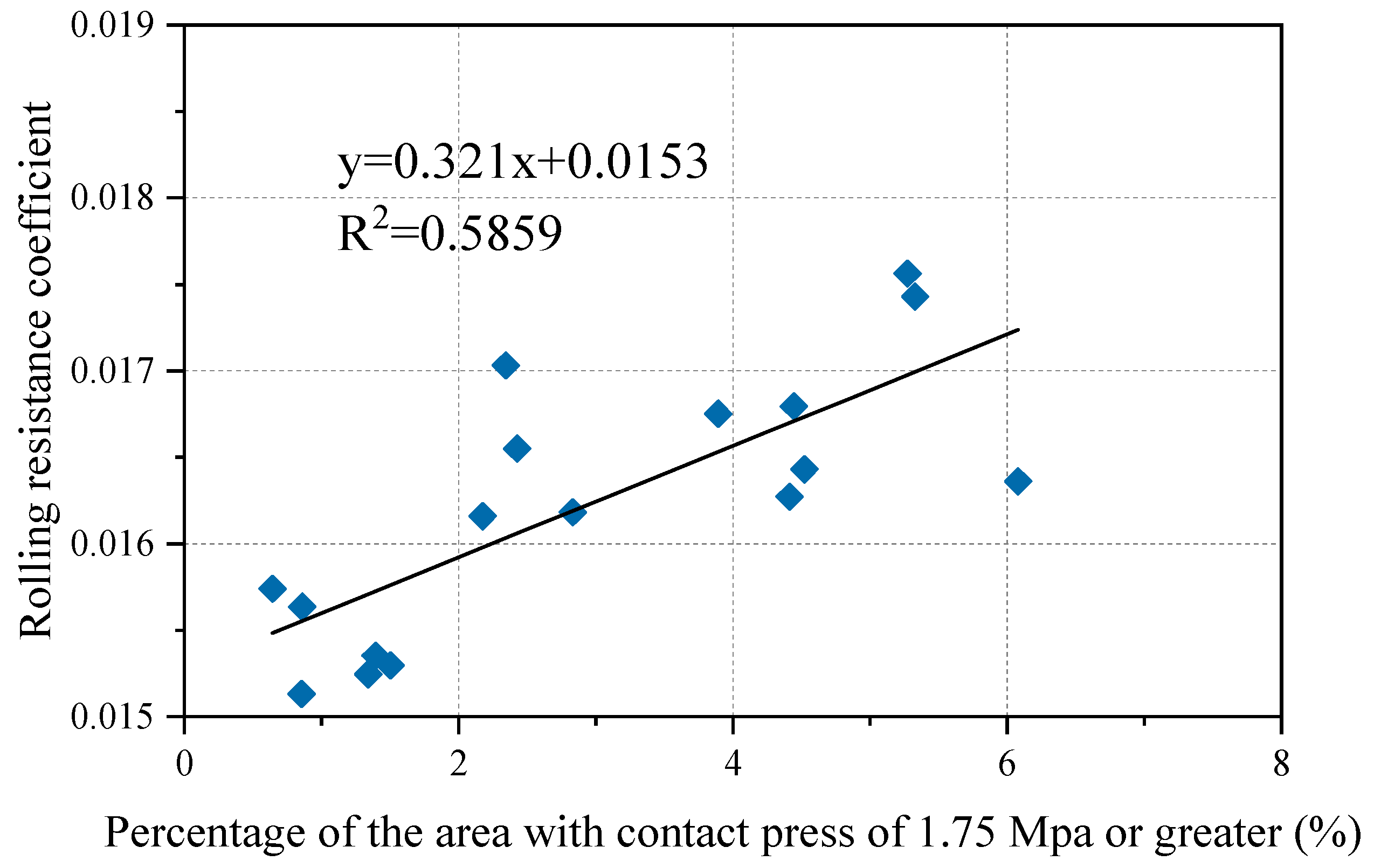
| Measurement Methods | Principle Testing Methods | Features | Equipment View | |
|---|---|---|---|---|
| Imprinting method | Carbon paper [22] | Break of microcapsules due to pressure; colorless hidden dyes spill out and become colored by acid | Easy to operate; low cost; only applicable for measuring contact area | 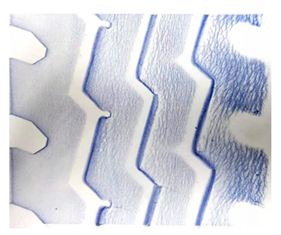 |
| Pressure plates [79] | Analysis of pressure magnitude and distribution based on the size of the imprint produced by the conical particles | Very low accuracy; can measure stress distribution |  | |
| Pressure-sensitive method | Pressure-sensitive film [45] | Color intensity is proportional to the applied pressure | Lower accuracy; non-reusable | 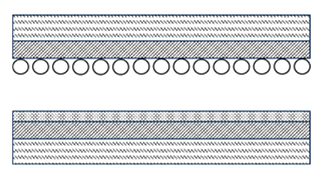 |
| FUJI pressure film [1] | Same as pressure-sensitive membranes | Measurement accuracy up to 0.125 × 0.125 mm; non-reusable | 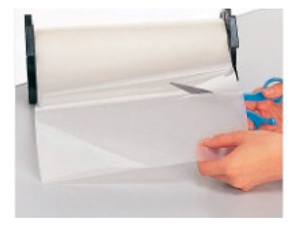 | |
| Pressure sensor method | Piezoresistive sensors [35] | Electrical resistance varies proportionally to the contact pressure | Easy to operate; intelligent; accuracy of 1.1 mm × 1.1 mm | 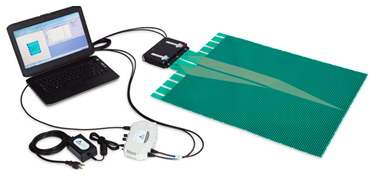 |
| Capacitive sensors [20] | Capacitive contact principle | Good flexibility; high sensitivity; can measure dynamic contact | 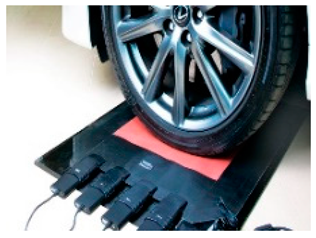 | |
| Piezoelectric Sensors [80] | Piezoelectric effect | High reliability; high sensitivity; high dynamic measurement accuracy | 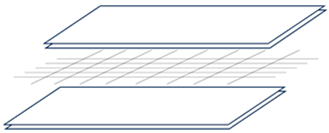 | |
| Stress-In-Motion system [81,82] | Multiple principles | Measures lateral and longitudinal forces; low accuracy | 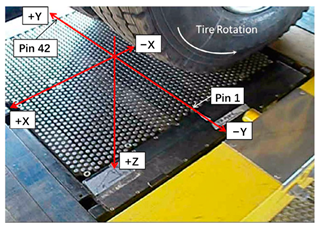 | |
| Optical method | Light absorption [83] | Based on the total reflection of light | High resolution; frequent calibrations required |  |
Disclaimer/Publisher’s Note: The statements, opinions and data contained in all publications are solely those of the individual author(s) and contributor(s) and not of MDPI and/or the editor(s). MDPI and/or the editor(s) disclaim responsibility for any injury to people or property resulting from any ideas, methods, instructions or products referred to in the content. |
© 2024 by the authors. Licensee MDPI, Basel, Switzerland. This article is an open access article distributed under the terms and conditions of the Creative Commons Attribution (CC BY) license (https://creativecommons.org/licenses/by/4.0/).
Share and Cite
Gong, Z.; Miao, Y.; Lantieri, C. Review of Research on Tire–Pavement Contact Behavior. Coatings 2024, 14, 157. https://doi.org/10.3390/coatings14020157
Gong Z, Miao Y, Lantieri C. Review of Research on Tire–Pavement Contact Behavior. Coatings. 2024; 14(2):157. https://doi.org/10.3390/coatings14020157
Chicago/Turabian StyleGong, Zhenlong, Yinghao Miao, and Claudio Lantieri. 2024. "Review of Research on Tire–Pavement Contact Behavior" Coatings 14, no. 2: 157. https://doi.org/10.3390/coatings14020157
APA StyleGong, Z., Miao, Y., & Lantieri, C. (2024). Review of Research on Tire–Pavement Contact Behavior. Coatings, 14(2), 157. https://doi.org/10.3390/coatings14020157






